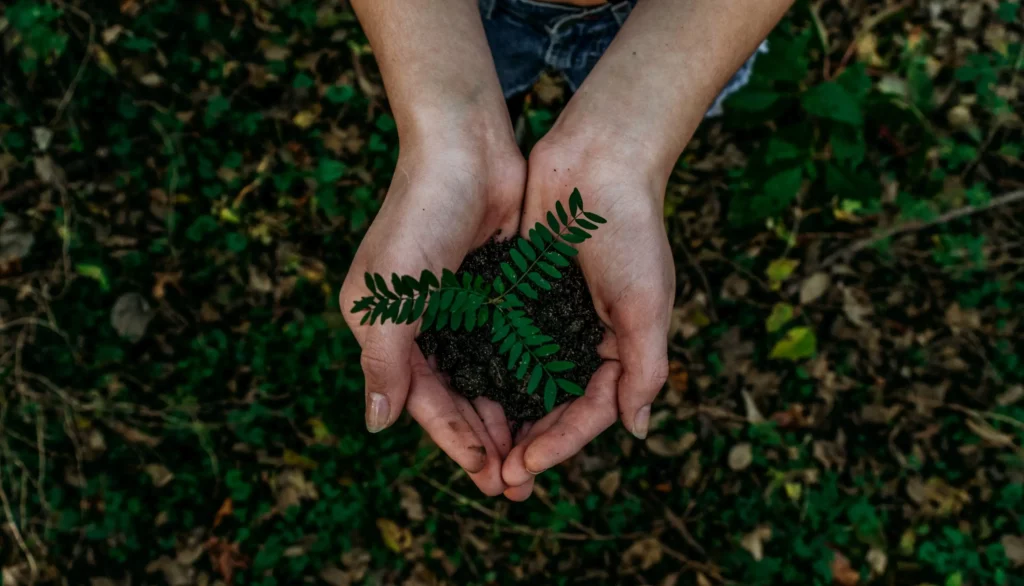Navigating the eco-friendly product market can be a jungle of confusing labels and dubious claims. Fear not, dear reader, your compass has arrived. We’ve rounded up the top eight quality assurance standards that will help you rule the green kingdom with an iron fist.
From ISO 14001 to Cradle to Cradle Product Certification, these benchmarks provide a clear path to sustainability, giving you the power to confidently choose environmentally sound products. No need for a cape, your sustainable choices are heroic enough.
Let’s dive in, shall we?
Understanding Eco-friendly Product Standards
Navigating through eco-friendly product standards is crucial in ensuring the environmental integrity and sustainability of a product. It’s a lot like trying to find your way through a maze, except that instead of a cheesy prize at the end, you get a planet that’s still habitable for future generations. Not bad, right?
Now, let’s talk about eco-product labeling. It’s the sexy tattoo of the eco-world, telling you all you need to know about a product’s environmental impact without saying a word. However, like all good tattoos, it should be authentic. Only products that meet certain environmental standards should wear this badge of honor. It’s like being a part of an exclusive club, and not just anyone should be allowed in.
This brings us to our next point: Greenwashing prevention. With all the green buzzwords floating around, it’s easy for companies to slap on a label and call themselves “eco-friendly.” But let’s be real, just because you have a leaf on your logo doesn’t mean you’re Mother Nature’s best friend.
Preventing greenwashing is all about holding companies accountable for their environmental claims. It’s like being a superhero, except instead of fighting villains, you’re battling false advertising. It’s about ensuring transparency and honesty in the eco-labeling arena.
ISO 14001: Environmental Management
Let’s chat about an environmental heavyweight, the ISO 14001.
This green champion is all about the management of environmental responsibilities in a systematic manner, and boy, does it pack a punch!
From its numerous benefits to the ins and outs of implementation and the importance of being ISO certified – we’re about to explore it all.
ISO 14001 Benefits
Implementing ISO 14001’s environmental management system offers noteworthy benefits, not only in terms of environmental impact reduction but also in enhancing business efficiency and performance. By conducting an Environmental Impact Assessment, businesses can meet Sustainable Development Goals and gain a competitive edge.
| Benefits | How it Makes You Feel |
|---|---|
| Reduced Environmental Impact | Proud and Responsible |
| Enhanced Business Efficiency | Powerful and In Control |
| Meeting Sustainable Goals | Fulfilled and Hopeful |
| Competitive Edge | Confident and Ambitious |
| Cost Savings | Satisfied and Secure |
Isn’t it delightful to feel like a superhero saving the planet while making your business thrive? Now that we’ve talked about the benefits, get ready to jump into the exciting world of the ISO 14001 implementation process.
Implementation Process
To successfully embark on the ISO 14001 implementation process, it is crucial to comprehend the distinct steps involved in this environmentally-focused quality assurance standard.
- Initial Environmental Review: This involves a comprehensive assessment of your current operations, identifying areas that potentially impact the environment. It’s the equivalent of an environmental health check.
- Process Documentation: Now, you’ll document your processes, ensuring they align with ISO 14001 requirements. Think of it as your environmental playbook.
- Quality Monitoring: Finally, it’s time to keep an eye on the ball! Regular monitoring ensures you’re in line with your environmental goals and ISO 14001 standards.
Remember, control is the name of the game here. ISO 14001 isn’t a one-time sprint but a continuous relay race.
Now, let’s dive into the importance of ISO certification.
ISO Certification Importance
Achieving ISO 14001 certification carries significant importance, as it not only validates your commitment to environmental sustainability but also enhances your brand’s credibility in the global marketplace.
Now, you may be thinking, “But what about the certification cost?” Well, consider it an investment in your brand’s future. After all, you can’t put a price on global acceptance, can you?
Plus, let’s face it, nothing screams ‘we’re in control of our environmental impact’ quite like an ISO 14001 badge. It’s like the eco-friendly equivalent of a superhero’s shield.
So, hold onto your recyclable hats, because once you’ve got that certification, you’re playing in the big leagues of sustainability.
Next, we’ll be diving into the green seal standards for sustainability, so stay tuned.

Green Seal Standards for Sustainability
Adhering to Green Seal Standards for Sustainability is a crucial step in ensuring the ecological integrity of a product, as these standards offer rigorous, science-based environmental benchmarks. Let’s not kid ourselves, folks, it’s not just about slapping a green sticker on the packet and calling it a day. No, sir! The Green Seal validation is a badge of honor, a sign that your product is the real environmental deal.
The certification impact is immense. It’s not just beneficial for old Mother Nature, but it also gives you, the product maker, a certain marketing edge. Who doesn’t love a product that’s kind to the environment? It’s like finding out that your favorite ice cream is calorie-free. It’s a win-win!
Now, let’s break down the process:
- Evaluation: The product will be analyzed to check if it meets the Green Seal standard. It’s like a school exam for your product but without the sweaty palms and nervous breakdowns.
- Review: The product is thoroughly reviewed. It’s not a casual once-over, but a detailed look into the product’s environmental impact.
- Certification: If the product passes the test, it earns the Green Seal of approval.
So, you see, the Green Seal Standards for Sustainability aren’t just fancy words. They are a rigorous and thorough process that ensures your product is genuinely eco-friendly.
Now that we’ve got that down, it’s time to move on to the next leg of our eco-friendly journey – the ‘energy star guidelines for efficiency’. Buckle up, folks, it’s going to be an enlightening ride!
Energy Star Guidelines for Efficiency
Energy Star, a program initiated by the U.S. Environmental Protection Agency (EPA), provides stringent efficiency guidelines that eco-friendly products must adhere to. But hey, don’t let the term ‘stringent’ scare you off. It’s not like an overzealous gym instructor demanding ten more push-ups. It’s more like a friendly nudge towards a healthier, greener planet.
Now, let’s go back in time, shall we? Like a good Hollywood movie, Energy Star’s history is packed with action and drama. Born in 1992, it was a star (pun intended) from the very beginning. This program was destined for greatness, and boy, did it deliver! Today, it’s the go-to for anyone looking for the green stamp of approval.
But here’s the catch, not every Tom, Dick, and Harry product can slap on an Energy Star label and call it a day. Oh no, there’s a list, a product eligibility criteria if you will. It’s like the bouncer at an exclusive club, not letting anyone in without the right credentials. Your product needs to deliver significant energy savings nationwide and its increased cost must be recouped through utility bill savings within a reasonable time period. Now, ain’t that a kick in the energy efficiency pants!

Forest Stewardship Council (FSC) Certification
A significant number of eco-friendly products seek the Forest Stewardship Council (FSC) certification to ensure sustainable forest management and responsible sourcing of wood materials. It’s like a green stamp of approval, just not necessarily in the color green.
Now, let’s break this down to the bare bones, or should I say, bare logs?
- The FSC certification is globally recognized and is designed to ensure that forest products are sourced responsibly, not from the backyard of some unsuspecting neighbor.
- The certification process involves a thorough examination of forest management practices. It’s like a school exam, only more trees are involved and there’s no risk of detention.
- It also assures consumers that they are buying products that do not contribute to deforestation. So, you can sleep soundly knowing that your wooden bed frame didn’t cause Bambi to lose his home.
However, it’s not all sunlit glades and chirping birds. The FSC has had its share of controversies, including accusations of certifying companies involved in illegal logging. It’s like finding out the cookie you thought was sugar-free actually has three types of sugar in it.
Moreover, the costs associated with FSC certification can be high, potentially discouraging smaller companies from seeking certification. It’s a bit like wanting to join a fancy club, but the membership fee makes you reconsider.
Fair Trade Eco-friendly Standards
Transitioning from FSC certification, another significant quality assurance standard in the eco-friendly market is the Fair Trade certification. Now, don’t be fooled into thinking this is just another label slapped on to your morning cup of joe. It’s much more than that, my friends.
Fair Trade certification is like the Clark Kent of trade ethics, working behind the scenes to bring justice and balance to the world of commerce.
In essence, this standard ensures that producers in developing countries are given a fair deal (hence the name). They receive a minimum price for their goods, which protects them from the volatile global market. But Fair Trade isn’t just about playing nice in the sandbox, it also has a deep commitment to sustainability marketing. In other words, it’s not enough just to produce goods ethically; those goods must also be marketed in a way that promotes sustainable practices and values.
But what does this all mean for you, the consumer? Well, when you buy a product with the Fair Trade logo, you’re not just getting a quality product. You’re also taking control of your consumer impact, voting with your wallet for a world that values fair trade, sustainability, and eco-friendly practices.
Organic Certified Quality Assurance
In the realm of eco-friendly product standards, Organic Certification serves as a crucial benchmark for environmental sustainability and quality assurance. When you see the term ‘Organic Certified,’ think of it as a green thumb’s up, assuring you that the product you’re buying is doing its bit for Mother Earth.
Now, let’s delve a little into the nitty-gritty of this certification. Here’s a number-friendly breakdown:
- Organic Farming Regulations: These are the rules that dictate how organic products should be grown and processed. Pesticides? Forget about it! GMOs? No, thank you! Forget ’50 shades of grey’, we’re all about 50 shades of green.
- Sustainable Packaging Methods: This is all about reducing, reusing, and recycling. It means the packaging needs to be as eco-friendly as the product inside. It’s like ensuring the wrapping paper is as thoughtful as the gift – only the gift is our planet.
- Certification Process: This is the rigorous testing phase that makes sure the product lives up to the organic hype. It’s like the final exam, where cheating is strictly forbidden, and the only crib notes allowed are compost notes.
So, you see, Organic Certification is not just a label, it’s a promise; a promise to adhere to strict organic farming regulations and sustainable packaging methods that respect the environment.
The journey doesn’t end here though. It’s time we venture into the realm of ‘cradle to cradle product certification’, where the green gets a whole lot greener. Stay tuned!
Cradle to Cradle Product Certification
Ever heard of Cradle to Cradle Product Certification? No?
Well, let’s strap in and take a fun ride through its process, benefits, and the potential bumps in the road we call challenges.
Certification Process
Delving into the Cradle to Cradle Product Certification, this process epitomizes a rigorous, multi-tiered approach to ensure eco-friendly quality standards for products. Now, don’t let the words ‘rigorous’ and ‘multi-tiered’ scare you; consider them as opportunities for your product to strut its green stuff!
- Step One: Assessment – Here we identify certification obstacles. Is your product recyclable? Toxic-free? We’ll find out.
- Step Two: Optimization – This stage can be likened to a spa day for your product. We give it the best eco-friendly makeover it could ever dream of.
- Step Three: Certification – Now, let’s talk certification expenses. Yes, it can be costly, but think about the bragging rights of having a certified eco-friendly product.
In the end, it’s about ensuring top-notch quality and environmental responsibility.
Benefits and Challenges
The product’s journey through the Cradle to Cradle certification process presents a unique blend of benefits and challenges, each playing a crucial role in shaping eco-friendly quality standards.
Let’s be honest, it’s a bit like taking a roller coaster ride through the world of sustainability!
On one hand, the certification can lead to positive economic implications. It’s like a green light signaling to consumers that your product has passed a rigorous eco-friendly test, boosting sales and brand image.
Yet, the ride isn’t always smooth. It also means wrestling with the complexity of meeting stringent standards and the cost implications.
And let’s not forget the consumer perception – they’re the judge and jury, after all. If they sense a hint of greenwashing, say goodbye to your reputation!
Conclusion
In conclusion, implementing the top eight quality assurance standards can significantly enhance the eco-friendliness of products.
A heightened commitment to sustainability, as seen in a 2019 study revealing a 55% increase in consumers preferring eco-friendly products, can instigate a positive change in manufacturing trends.
It’s time the world embraced this shift, laughing in the face of adversity, while conversing about the importance of quality, sustainability, and the planet’s health.




